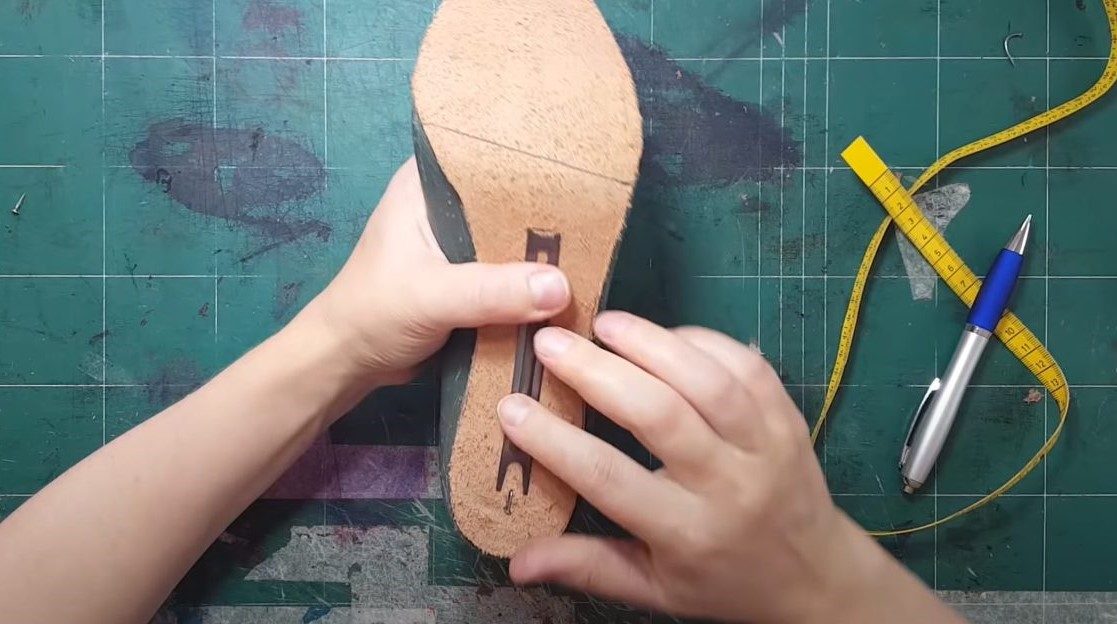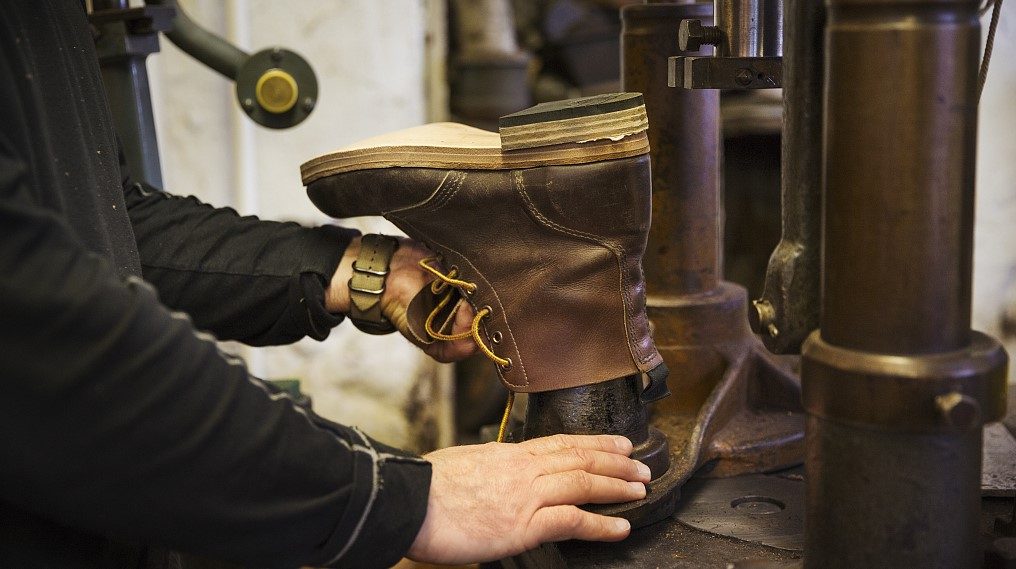Work boots are essential for various industries and professions, which provide protection and support in demanding work environments. One crucial component of work boots is the steel shank, as it plays a vital role in enhancing stability, durability, and foot comfort.
In this article, we will explore what a steel shank is, its purpose, the materials used in its construction, and why it is beneficial for certain types of boots.
What Is A Steel Shank In Boots?
A steel shank is a slender, flat piece of steel that is strategically inserted into the sole of a boot during its manufacturing process.
This simple addition holds great importance in the functionality and comfort of the boots.
The primary purpose of a steel shank in a boot is to provide support to the arch and enhance comfort and protection for the wearer. By providing arch support, foot protection, and stability, it plays a vital role in ensuring that boots are not only comfortable but also safe and durable.
What Are The Benefits Of A Steel Shank In Boots?
Arch Support: A Steel shank helps maintain the shape of the boot’s arch, providing proper support to the wearer’s foot. This support relieves strain on the arch muscles and ligaments, improving comfort during prolonged wear.
Foot Protection: There is always a risk of puncture injuries in tough areas or workplaces with heavy machinery. A steel shank gives a layer of protection to the boot’s sole, keeping sharp items from penetrating the sole and injuring the wearer’s foot.
Stability: Steel shank boots provide improved stability on rough terrain. The shank helps to uniformly distribute the wearer’s weight, lowering the risk of ankle twists and injuries.
Durability: Steel shanks contribute to the overall durability of the boot. They prevent the sole from breaking down or deforming over time, ensuring that the boot maintains its shape and performance.
Construction and Placement of Boot Shank
Because of its strength and longevity, steel shanks are often built of high-quality and corrosion-resistant steel alloys.
They are frequently coated or treated to avoid rust and corrosion to increase their longevity. The shank is contoured to match the arch of the boot, ensuring a secure fit within the sole.
During the boot manufacturing process, the steel shank is typically positioned between the insole and the outsole of the boot.
It runs along the length of the boot’s arch, from the heel to the ball of the foot. The layers of the boot are then securely sewn or bonded together, ensuring that the shank stays in place.
This placement ensures that the shank provides support where it is needed most, reducing fatigue and discomfort during extended wear.
Moreover, it contributes to the overall durability and longevity of the boots by preventing excessive bending or flexing, reducing wear and tear on the boot’s midsole and outsole.

What Kinds of Boots Need to Have A Steel Shank?
While not all boots require a steel shank, they are particularly beneficial for certain types of footwear, including:
Farm Boots: Farming work requires long periods of walking or standing on uneven terrain, which causes foot strain, weariness, and discomfort. Steel shanks in farm boots provide necessary arch support, proper weight distribution, stability, and fatigue prevention, allowing for more comfortable and efficient work. They also work as protective shields to resist punctures and impacts.
Work Boots: Work boots are made to resist harsh working conditions like construction sites, warehouses, and manufacturing factories. These work boots are required to provide foot support during long-period standing or walking.
With the steel shanks, those work boots can provide crucial arch support, stability, and protection. The steel shank ensures that boots can withstand big weights while still providing comfort and lowering the risk of foot injuries.
Hiking Boots: Hiking boots are designed for outdoor lovers who want to go on difficult walks and trips. These boots must give stability and support ough terrains with uneven surfaces and inclines.
A steel shank in hiking boots provides great arch support, decreasing foot strain and preventing fatigue on long hikes. It improves the structural integrity of the boot, allowing hikers to cross rocky routes and retain balance on uneven terrain.
Logger Boots: Logger boots are made specifically for people who work in the field of forestry. These boots must be able to survive harsh conditions such as uneven terrain, heavy machinery activity, and exposed workplaces with falling debris.
Steel-shanked logger boots provide protection against potential foot injuries caused by chainsaws, fallen branches, or big logs. The steel shank gives the rigidity and strength of the boot, offers stability and lowers the risk of foot-related injuries.
Motorcycle Boots: Riders must wear motorcycle boots to enhance their comfort and safety on the road. The steel shank in motorcycle boots helps to provide overall protection and stability that riders need.
It supports the arches and reduces fatigue during lengthy rides. Furthermore, the steel shank provides strength in the event of an impact or accident, protecting the feet from injury.
What Are The Materials Of Boot Shanks?
Boot shanks can be made from various materials, and steel is the most common choice due to its strength and durability.
However, there are some alternatives to the steel shank in boots:
Fiberglass: Some boots utilize fiberglass shanks. These are lightweight and offer good flexibility while still providing arch support.
Composite Materials: Composite shanks are made from non-metallic materials like Kevlar, plastic, or carbon fiber. They offer a balance between strength and weight, making them a suitable choice for some work and hiking boots.
Plastic: In less demanding footwear, plastic shanks may be used for cost-effectiveness. They provide some arch support but lack the durability of steel or composite shanks.
How To Tell If Boots Have A Steel Shank?
Identifying whether a boot has a steel shank is relatively straightforward. Here are a few methods:
Check the Label or Product Description: Many boot manufacturers proudly advertise the inclusion of a steel shank in their product descriptions. Check the label or product specifications for this information.
Inspect the Sole: Turn the boot sole up and examine it closely. If you see a thin, flat strip of metal running from the heel to the ball of the foot, you likely have a steel shank in your boot.
Feel for Rigidity: Press your thumb against the arch area of the boot’s sole. If you feel a firm, unyielding support structure beneath the insole, it is likely a steel shank.
Do You Really Need Steel Shank In Boots?
If you engage in activities that involve uneven terrain, heavy loads, or potential foot hazards, steel shank boots can greatly enhance your comfort and safety.
On the other hand, for everyday casual wear or less demanding environments, boots without a steel shank may suffice.
Ultimately, whether you need to invest your money in steel shank boots depends on your specific needs. The benefits of added support and protection provided by steel shank boots are well worth considering.
Conclusion
In summary, the steel shank is an essential component of many types of boots, providing arch support, foot protection, stability, and durability.
Whether you need a steel shank in your boots depends on your intended use and the level of support and protection you require. Understanding the role of the steel shank allows you to make informed decisions when choosing the right pair of boots for your needs, ensuring both comfort and safety in every step you take.




















Leave a reply